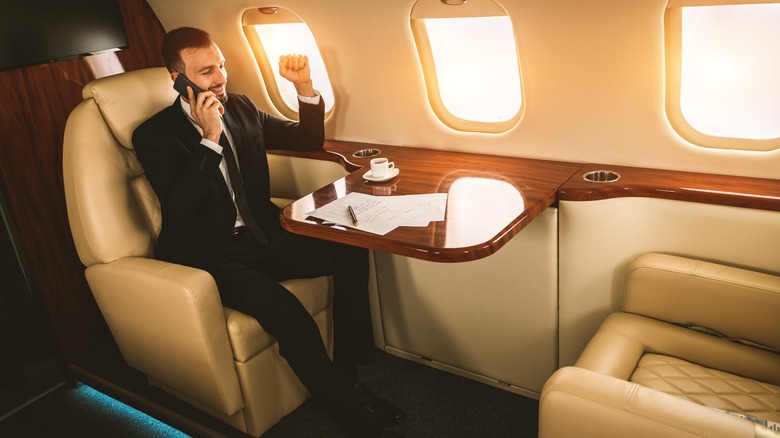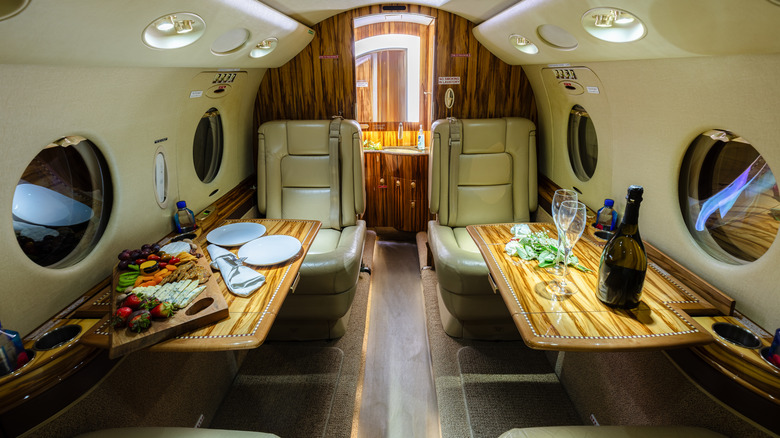How Some Private Jet Cabins Stay So Quiet (Compared To Commercial Flights)
If you've ever had the distinct pleasure of flying in a private jet, there's a very particular difference you might have noticed from a trip on your average commercial airliner. No, it's not the increased legroom or bathrooms that don't smell funny; it's the distinct lack of noise coming in from outside the cabin. While the degree depends heavily on the precise type of private jet you're flying in, many of the more luxurious private jets out there are noticeably quieter for passengers in the cabin. Where you would hear the constant roar of the engine turbines or wind whistling over the jet's body, instead all you hear is a dull hum.
Higher-quality private jets aren't just equipped with carpeting and wet bars, they're also loaded with various forms of noise dampening equipment and materials that help to cancel out the cacophony of the open skies. From active noise-cancelling systems in the cabin itself to special soundproof materials lining the jet's body, the most expensive celebrity private jets are worth the extra cash and weight to ensure the comfort of the VIPs riding within.
Noise is reduced through active noise-cancelling and soundproof materials
The problem with reducing the noise on a commercial flight is that commercial-sized jets are already too large and heavy to realistically accommodate the necessary materials and tech. If you tried to equip a typical passenger jet with this hardware, it'd cost too much to build, as well as potentially become too heavy for safe operation.
As private jets are typically much smaller than commercial jets, it's more realistic for them to make up some of the weight difference with extra features. As for what features a private jet can have to reduce noise, they broadly fall into two categories: active and passive noise reduction.
Active noise-cancelling systems on a jet are similar to the noise cancelling tech you'd find in a pair of noise-cancelling Bose headphones. The interior of the cabin is lined with strategically placed microphones and speakers, which detect loud noises. Internal software parses these loud noises and automatically generates a counter sound, which cancels them out. This is a great way to deal with low-frequency sounds like air flying past the jet or circulating in the cabin. The downside to active systems is that they're very elaborate and complicated, which both makes the jet heavier and increases the risk of random failure.
A more common choice for noise reduction is soundproof materials. Special soundproof materials are used to line particular spots in and around the cabin to reduce incoming noise from the loudest sources, such as near the engines or at the rear of the fuselage. These materials usually include soft, pliable foams and blankets that don't transmit sound as well as something like metal. Additionally, cabin accoutrements like carpeting and ridged walls can aid in soundproofing as well, aiding the overall effort without compromising the cabin's style.

